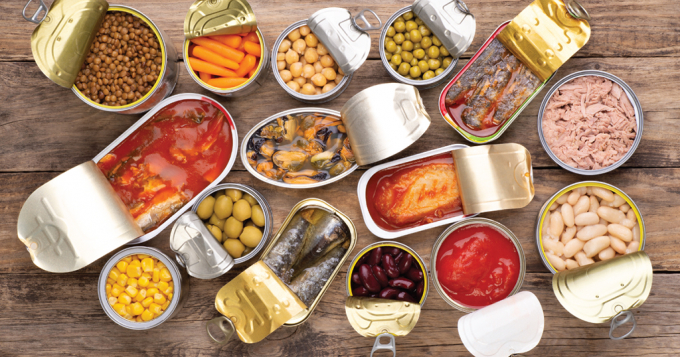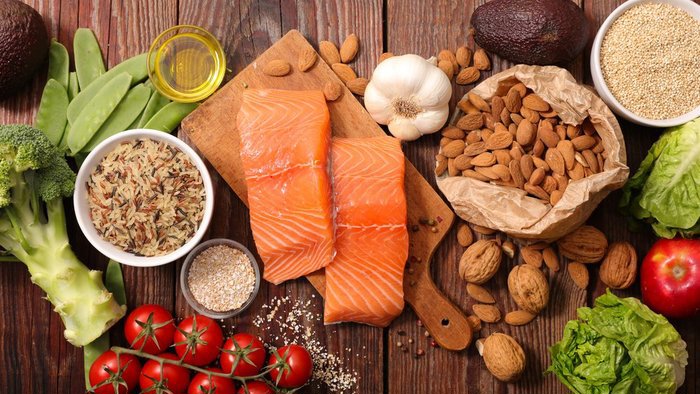1. Some main types of food additives
According to the World Health Organization (WHO), various types of food additives have been developed over time to meet the needs of large-scale food processing. Additives are added to ensure that processed foods remain safe and in good condition during their journey from the factory or industrial kitchen to the warehouse, store, and finally to the consumer. Additives are also used to change the sensory properties of foods including taste, smell, texture, and appearance.
According to WHO, food additives are evaluated for their potential adverse effects on human health before they are approved for use. Competent authorities at national, regional and international levels are responsible for assessing the safety of food additives. The Joint FAO/WHO Expert Committee on Food Additives (JECFA) is the international body responsible for assessing the safety of food additives for use in internationally traded foods.
Food additives can be derived from plants, animals or minerals, or they can be chemically synthesized. There are thousands of food additives in use, all designed to do a specific job.
Food additives can be grouped into three broad categories based on their function, which are:
- Flavoring agents are chemicals that provide flavor or aroma and are added to food to change its aroma or taste.
- Enzyme preparations are a type of additive that may or may not be present in the final food product.
- Other food additives are used for a variety of reasons, such as preservation, coloring, and sweetening. They are added when food is being prepared, packaged, transported, or stored, and eventually become a part of the food.

According to the World Health Organization, food additives are evaluated for potential harm to human health before being allowed for use. Illustration photo.
2. What is leaky gut syndrome?
Leaky gut syndrome is a condition that affects the integrity of the intestinal lining, also known as "intestinal permeability", it occurs when the intestinal wall is damaged, allowing compounds to enter and be absorbed into the bloodstream. For example, partially digested proteins and fats can seep through the intestinal lining, enter the bloodstream, causing an allergic reaction.
Leaky gut syndrome not only affects digestive health but can also cause common symptoms related to inflammation and autoimmune reactions such as: bloating, joint pain, headaches, fatigue, skin problems, thyroid problems...
Research has shown compelling evidence that leaky gut syndrome is linked to several autoimmune diseases, including type 1 diabetes. It also causes malabsorption of important minerals and nutrients, including zinc, iron, and vitamin B12.
To understand leaky gut syndrome properly, according to Dr. Marcelo Campos, Lecturer at Harvard Medical School, our abdomen is covered by a large intestinal lining. When it functions normally, it forms a tight barrier that controls what is absorbed into the bloodstream. An unhealthy intestinal lining can have large cracks or holes, allowing partially digested food, toxins, and germs to penetrate the tissues below it. This can easily cause inflammation, alter the intestinal flora, leading to problems in the digestive tract and more.
There is a growing body of research suggesting that changes in gut bacteria and inflammation may play a role in the development of several common chronic diseases. Some studies suggest that leaky gut may be linked to other autoimmune diseases (lupus, type 1 diabetes, multiple sclerosis), chronic fatigue syndrome, fibromyalgia, arthritis, allergies, asthma, acne, obesity, and more.

Some additives in processed foods cause leaky gut syndrome. Illustration photo.
3. Some food additives cause intestinal damage
Although processed foods offer convenience and fit into modern lifestyles, a growing body of research suggests that some common additives found in these foods can cause indigestion and negatively impact gut health.
In a study published in the journal Autoimmunity Reviews, researchers found evidence that processed foods weaken the gut's resistance to bacteria, which increases the risk of autoimmune diseases.
Here are some food additives that have been linked to damage to the tight junctions of the intestine:
Road
Glucose was found to increase intestinal permeability and induce changes in the distribution of key tight junction proteins in the human Caco-2 cell line, indicating intercellular leakage.
The increased sugar consumption of many people leads to higher levels of advanced glycation end products (AGEs). Once formed, AGEs increase inflammation and exacerbate leaky gut.
Sodium
A high-salt diet doesn’t just affect the heart, it’s also thought to loosen the tight junctions that keep the gut functioning properly. Excess salt can actually impact the innate immune system, causing macrophage dysfunction.
In a study in mice, increased salt levels appeared to cause neuropathy in multiple sclerosis. Similar findings have been noted in human studies.
Emulsifier
Emulsifiers are added to most processed foods to improve texture and extend shelf life. Emulsifiers appear to act like detergents to disrupt the mucus lining of the intestines. They also wipe out healthy gut bacteria, causing chronic low-grade inflammation that promotes colon cancer and leaky gut.
Organic acid
Researchers have investigated the potential risks of using these solvents in food and beverages. Specifically, alcohol and its metabolites weaken the junctional barriers needed to prevent leaky gut. Acetaldehyde, produced when the liver processes alcohol, may be the cause.
Gluten
Researchers involved in studying food additives that cause leaky gut also say that gluten should be avoided. They found that intestinal permeability increased when immune cells were exposed to gliadin.
Gliadin is a protein found in wheat and is a component of gluten. It helps bread rise during baking. Gluten is also often hidden in sauces and gravies that use wheat flour as a thickener.
Nanometer particles
Nanotechnology in food is a booming business and its use continues to increase around the world. In the US in particular, the use of nanoparticles in food and food packaging is skyrocketing.
Nanotechnology takes a material and makes it unnaturally small, ranging in size from 1nm to 100nm. But at these sizes, materials can have unusual physical, chemical, and biological properties and functions that are significantly different from the original size of the compound. And according to the researchers: "They can behave in unexpected ways when inside human cells."
So why are we using them in food? Nanomaterials help improve the taste, color, appearance, consistency, and texture of food. Nanomaterials are also used in food packaging to help bottled drinks prevent CO2 loss. Silver nanoparticles are also embedded in plastics to kill bacteria. However, these nanoparticles have also been linked to DNA and cell damage. The long-term effects of eating nanoparticles are not known, so scientists advise against their use.

Anti-inflammatory foods help protect gut health.
According to Dr. Marcelo Campos, there is still debate about whether leaky gut causes the development of extra-gastrointestinal diseases in humans. However, eating a nutrient-dense, unprocessed diet that includes foods that help fight inflammation (and avoid foods that are known to cause inflammation) can, at least in theory, help rebuild the lining of the gut and bring more balance to the gut flora. This solution is safe and has no side effects.
Source: https://giadinh.suckhoedoisong.vn/6-phu-gia-thuc-pham-co-the-gay-hoi-chung-ro-ri-ruot-172240508225558801.htm



































































































Comment (0)